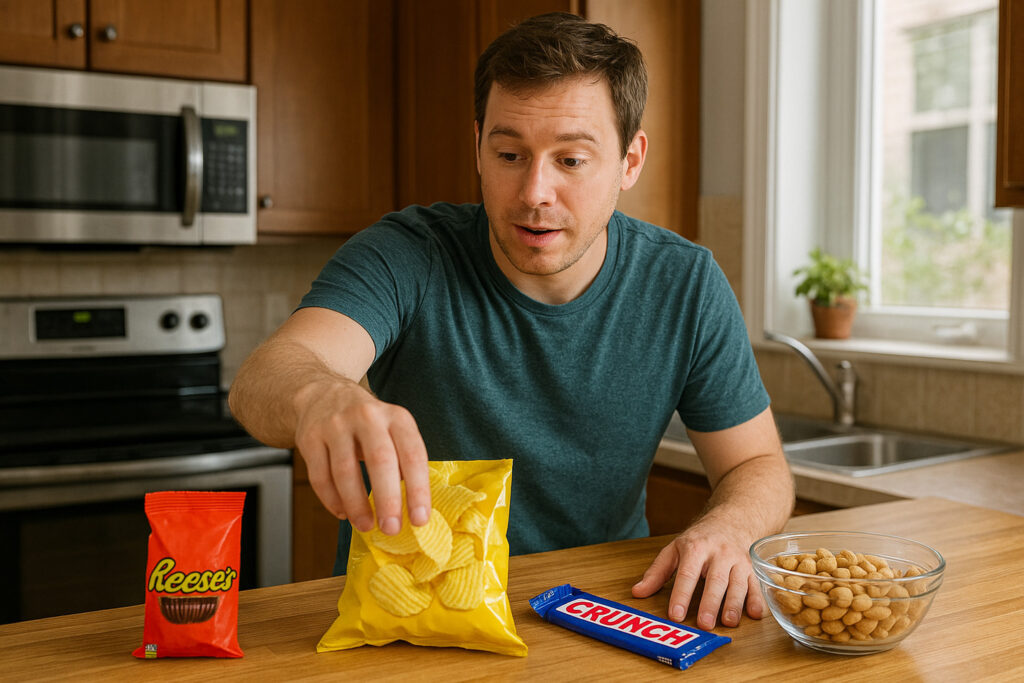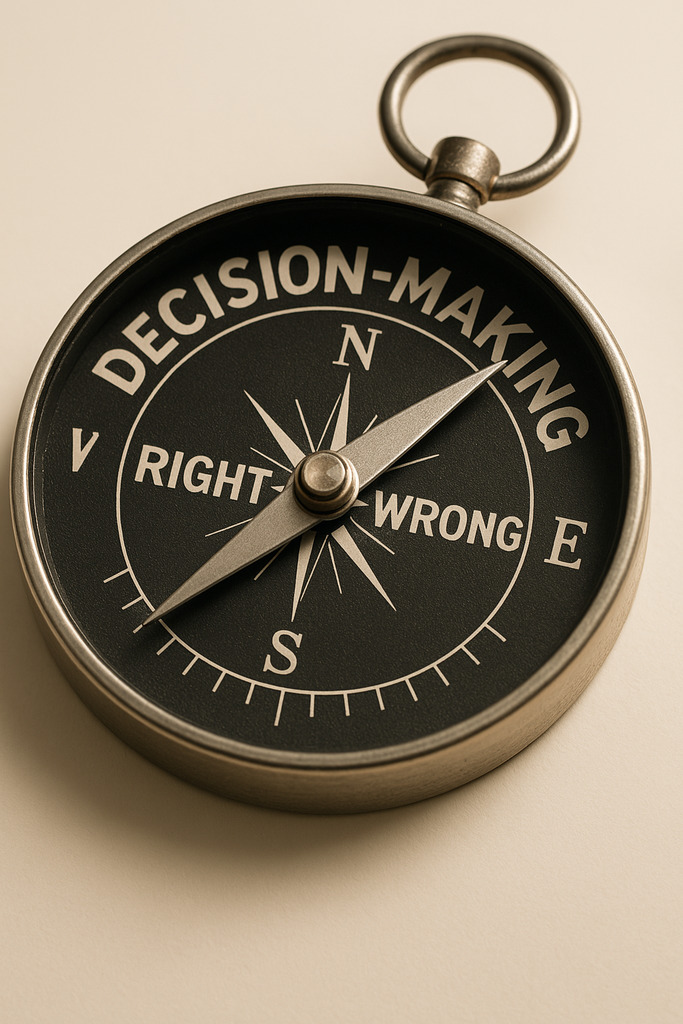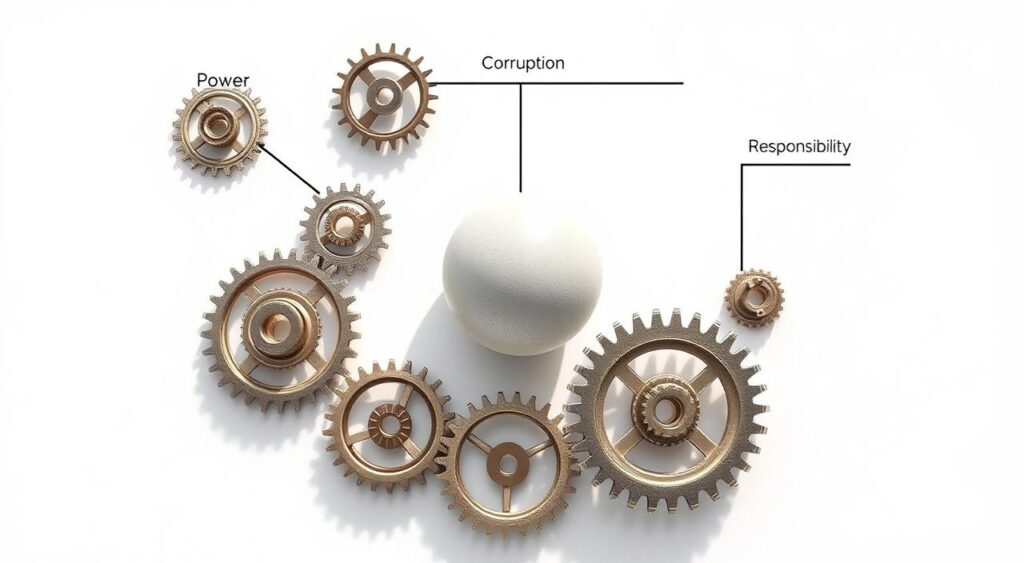Acton’s law mental model reveals that our choices—like grabbing fast food despite claiming to eat healthy—show what we truly believe. Actions don’t just reflect intentions; they expose hidden beliefs we might not even recognize ourselves.
This principle illustrates how individuals often make decisions that contradict their stated views, revealing the true power of mental models in shaping behavior.
Think of it like riding a bike. You don’t consciously remember how to balance—you just do it. Similarly, mental models shape decisions without needing active thought. Whether choosing a job or reacting to stress, your behavior follows patterns built through experience, habits, and subconscious beliefs.
This process reflects the law of human behavior, where the way we respond is often automatic, influenced by the events and costs associated with our choices.
Research from Princeton University shows our brains categorize daily tasks—like cooking or parenting—into automatic “events.” These shortcuts help us navigate life efficiently.
But they also mean we often act on autopilot, guided by implicit frameworks rather than deliberate logic. Understanding these mental models can provide a clearer view of how decisions are made at different levels, revealing the underlying effects on our daily lives.
Key Takeaways
- Acton’s Law mental model: Actions reveal true beliefs more accurately than words
- Mental models operate consciously and subconsciously
- System 1 thinking (Daniel Kahneman) drives quick, emotion-based decisions
- Everyday choices—like food or routines—reflect ingrained patterns
- Behavior aligns with hidden frameworks,showing the power in shaping individual decisions in various contexts.
Introduction to Acton’s Law Mental Model
Every choice you make is a clue to your subconscious priorities. Take your morning routine: Do you hit snooze five times or jump out of bed? That split-second decision isn’t random—it’s shaped by hidden patterns guiding your behavior.
Consider how people avoid buses despite claiming to care about the environment. Their actions reveal a stronger belief in personal convenience over collective good.
I once coached a client who swore she valued fitness but skipped workouts for TV marathons. Her real priority? Comfort, not health.
These invisible frameworks don’t just shape personal habits. They influence career moves, financial choices, and even how we spend our time. A manager might praise teamwork yet hoard credit—their behavior exposing a deeper focus on individual recognition. This principle illustrates how our decisions reflect a law of behavior that individuals often overlook.
Why does this matter? Recognizing these patterns helps you:
- Spot mismatches between goals and actions
- Make decisions aligned with core values
- Design systems that support better choices
Like GPS directions for your life, understanding these models lets you course-correct before taking wrong turns. Next, we’ll explore how to map these hidden guides shaping your world.
Defining The Acton’s Law Mental Model

True priorities aren’t declared—they’re demonstrated daily. This core idea shapes the framework behind our choices. When someone buys a gym membership but never goes, their actions reveal a stronger belief in comfort over fitness. What we do—not what we say—shows what we genuinely value.
Think of it like this: If you keep a fire extinguisher at home but never check its expiry date, safety matters to you—just not enough to act consistently. These contradictions highlight how hidden frameworks guide the way we prioritize tasks and risks. Even small decisions, like choosing fries over salad, expose the tug-of-war between short-term desires and long-term goals.
This applies to individuals and teams alike. A workplace might claim “collaboration is key,” yet reward solo achievements. Their real focus? Competition over teamwork. These mismatches often stem from subconscious beliefs we’ve absorbed through experience, culture, or repeated habits. This principle reflects the law of human behavior, showing how people prioritize certain models of interaction over others.
Here’s the point: Our behavior patterns act as mirrors reflecting deeper convictions. They can align neatly with our stated values—or clash loudly. Ever promised yourself an early bedtime only to binge-watch shows? That gap between intention and action isn’t random. It’s your inner guidebook at work, revealing the processes and costs associated with your decisions.
What did your last week’s choices say about your true priorities?
How Mental Models Drive Actions

Your body speaks louder than your thoughts. Ever stepped back instinctively when a car honked nearby? That reaction isn’t random—it’s your inner guidebook translating beliefs into motion. We don’t just think our priorities; we live them through muscle memory and reflexes, reflecting the law of human behavior.
Take crossing the street. If a bus speeds toward you, your legs jump back before your brain processes danger. This split-second move reveals a deep-seated survival term wired into your nervous system.
Similarly, slouching at your desk or avoiding eye contact during tough talks shows how physical habits mirror mental models and frameworks that individuals use to describe their experiences in the world.
| Mental Concept | Embodied Action | Real-World Impact |
|---|---|---|
| Safety priority | Quickly moving away from danger | Prevents accidents |
| Time management | Checking phone constantly | Reduces productivity |
| Health goals | Choosing stairs over elevator | Improves fitness |
These patterns solve everyday problems without conscious effort. A parent automatically reaches to catch a falling cup—their body acting on a protect-first mindset, a principle that reflects the law of human behavior. Or consider how you angle your body toward exits in crowded rooms, reflecting an unconscious safety strategy that individuals use to describe their experiences in the world.
What do your daily motions say about your true terms for living? Folded laundry piled on the treadmill? That’s comfort overriding fitness goals, a decision that can cost you in the long run. Clenched jaw during meetings?
Stress beating calm intentions. By noticing these physical clues, you can redesign behaviors to match aspirations and view the power of your actions on a deeper level.
Understanding Implicit Mental Models

Have you ever grabbed a snack while dieting or scrolled social media instead of working? These choices aren’t random—they’re guided by hidden rules your brain follows without asking. Implicit mental models are like autopilot settings for daily decisions, built from past experiences and habits.
Subconscious Processes Influencing Behavior
Take smoking. Someone might know cigarettes harm health but still light up. Why? Their subconscious prioritizes stress relief over long-term wellness. Your brain creates these mental models as shortcuts to handle life’s complexity—sometimes working against your stated goals and the costs associated with those decisions.
These hidden frameworks operate 24/7. You might:
- Order takeout despite meal prepping plans
- Skip the gym after promising to go
- Check emails during family time
Each action reveals what you truly value in the moment. The gap between “I should” and “I did” often stems from these invisible guides. In various cases, ever snapped at a friend then wondered why? That’s your implicit framework overriding conscious intentions, a rule that affects your decisions.
Here’s the good news: With practice, you can spot these patterns. Start by reviewing last week’s choices. Did your actions match your goals? If not, ask: “What hidden reason made that choice feel right?” This process is essential for individuals looking to improve their decision-making.
Identifying these drivers turns autopilot into intentional living. Next time you face conflicting choices, pause. Ask which hidden rule is steering you—then decide if it deserves the wheel.
Buses, Smoking, and Behavioral Signals

Why do we act against our best intentions? Let’s explore two scenarios that reveal how hidden guides shape choices—even when logic says otherwise.
Immediate Impact: The Bus Example
Imagine standing at a crosswalk. A bus speeds toward you. Your body jumps back instantly—no thinking required. This reaction shows how mental models work when consequences are clear and urgent, illustrating a fundamental rule of human behavior.
We avoid danger because our minds link actions (stepping forward) with immediate outcomes (injury), which is an effect of how people respond in these cases.
Delayed Consequence: The Smoking Paradox
Now picture lighting a cigarette. You know smoking harms health, but the damage feels distant. Here, hidden beliefs—like “this calms me”—override long-term concerns. The delay between action (smoking) and consequence (illness) lets conflicting priorities take charge, illustrating a rule of human behavior where the mind often prioritizes immediate effects over the long-term state of health.
In this case, people may not realize how these things influence their decisions, resulting in a persistent habit despite the known risks.
| Scenario | Consequence Type | Mental Model Trigger | Behavioral Outcome |
|---|---|---|---|
| Bus approaching | Immediate | Survival instinct | Instant avoidance |
| Smoking habit | Delayed | Stress relief association | Continued use despite risks |
These experiments show how human behavior mixes logic with deeper drivers: acton’s law mental model. Quick decisions rely on snap judgments, while slow-building outcomes let old patterns linger.
Have you ever acted before thinking it through? That’s your brain using shortcuts shaped by years of invisible training.
Notice your own reactions this week. Do rushed choices align with your goals—or reveal hidden guides pulling the strings?
Role of Mental Models in Systems Thinking
What if your coffee habit could shape a city’s waste system? That’s systems thinking—seeing how daily choices ripple through bigger networks. Like puzzle pieces, each decision connects to others, creating patterns we often miss.
Imagine tossing a plastic bottle. Your action isn’t isolated. It affects recycling plants, ocean health, and even product design. Systems thinking helps map these hidden links. For instance:
| Your Choice | Immediate Effect | System Impact |
|---|---|---|
| Using reusable bags | Saves 5 cents per trip | Reduces plastic production by 1 ton/year |
| Biking to work | Saves gas money | Cuts city traffic by 2% over 5 years |
Businesses use this too. A company switching to LED lights doesn’t just lower bills—it influences supplier demands, energy grids, and even employee health. These invisible threads show why good frameworks matter in the business world. They turn chaos into clarity.
Ever notice how tidying one room makes the whole house feel cleaner? That’s systems thinking in action. Small wins build momentum. A manager approving flexible hours might boost morale, retention, and innovation—all from one change, reflecting a process that impacts individuals at every level.
Here’s the kicker: Better patterns lead to smarter decisions. Like training wheels for complex problems, they help you steer toward outcomes that matter. What systems are you shaping with today’s choices, and how do these events affect your overall state of mind?
Bridging the Gap Between Thought & Action

There’s a silent battle between what we plan and what we actually do. You might believe healthy eating matters, yet reach for chips when stressed. This mismatch between ideas and actions shapes our world more than we realize.
Acton’s Law Mental Model: When Ideas Meet Action
Take Alex, who left a corporate job to pursue art. For years, they claimed money didn’t matter—but worked 80-hour weeks. Only when they aligned actions with values did life feel authentic. This process illustrates a key law of human behavior: small changes can create big shifts in a person’s world:
- Swapping scrolling time for 10-minute walks
- Writing daily gratitude lists instead of complaints
- Pausing before reacting during tough talks
These tweaks reduced stress and improved relationships. Like adjusting a thermostat, tiny behavior changes reshape your environment. A friend started biking to work—not to save the planet, but to avoid traffic.
Within months, their carbon footprint dropped 30%, showcasing the effect of personal choices on a larger scale.
Ever snapped at someone then felt guilty? That discomfort is your inner compass saying “This isn’t you.” By noticing these moments, you can choose differently next time. Ask yourself:
Do my daily choices reflect who I want to be? This question is a critical point in understanding the rules that govern our actions.
Alignment isn’t about perfection. It’s catching mismatches faster—like realizing you’re humming a song you hate. Each course correction strengthens your thinking-action connection. What small step could you take today to close your biggest gap in terms of your personal development and business goals?
Mental Models in Life and Work
How do your daily choices shape your career and health? The principle guiding these decisions works like an invisible playbook—whether you’re picking breakfast or negotiating a deal.
Your actions at home and work follow patterns built through habits, experiences, and subconscious rules.
Take Sarah, a project manager who always approves safe ideas but rejects bold ones. Her hidden principle? Avoid failure at all costs. This mindset boosts short-term results but stifles innovation. At home, she skips doctor visits despite valuing health—another mismatch between intent and action.
| Personal Choice | Professional Impact | Hidden Driver |
|---|---|---|
| Ordering takeout nightly | Micromanaging teams | Fear of unpredictability |
| Saving 20% of income | Investing in staff training | Long-term security focus |
These patterns affect everyone. A study found nurses who washed hands religiously at work often forgot at home. Why? Workplace rules created a “safety first” model that didn’t translate elsewhere. Recognizing these gaps helps you:
- Spot errors in judgment
- Align choices with true priorities
- Build habits that serve both roles
Ever notice how stress-eating mirrors rushed work decisions? Both stem from the same principle: Seek comfort now, fix consequences later. By understanding these frameworks, you can redesign your playbook—one intentional decision at a time.
What personal habit is secretly shaping your professional path?
Time Blocks and Triggers to Improve Choices

What if a kitchen timer could make your toughest choices easier? Timeboxing turns vague plans into clear action by setting strict limits, a rule that many people find effective.
Think of it like a GPS for your day—you decide where to go and how long the trip takes, which can be a case of managing your mind and the things that distract you.
Timeboxing Explained
Ever given yourself 15 minutes to clean your desk? That’s timeboxing in real life. You work until the buzzer rings, then stop.
This process helps people understand the law of productivity: when you apply this rule, you see a direct effect on your work results. Here are some key things it helps:
- Crush procrastination (“I’ll handle emails in 20 minutes—no more”)
- Boost focus (writing a report becomes a 45-minute sprint)
- Reduce overthinking (decide fast, adjust later)
One tech CEO shared how 10-minute standup meetings cut wasted talk by 70%. In many cases, deadlines force clarity—no room for “maybe later.”
Commitment Through Forcing Functions
Forcing functions are like guardrails for your goals. They make action unavoidable. A bakery owner I know books pop-up events months ahead—locking in dates pushes her team to prep on time. Other examples:
- Non-refundable deposits for fitness classes
- Public launch announcements for products
- Automatic savings transfers on payday
These things work because they turn “should do” into “must do.” As research shows, external pressures often beat willpower alone.
Try this today: Set a 25-minute timer for one delayed task. Notice how the clock pushes you forward. Then, create a forcing function—schedule a call to review progress or prepay for that yoga class you keep skipping.
These small steps can lead to big shifts, as this rule illustrates how people often state that effective time management is part of achieving desired results. In many cases, the law of Parkinson shows that the effect of setting limits can transform how we approach tasks and the things we accomplish.
Parkinson’s Law in Action and Savings

What if tight deadlines could actually set you free? Parkinson’s Law states that tasks expand to fill the time—or money—we give them. By setting firm limits, you can control outcomes instead of letting them control you.
Imagine you have 3 hours to clean your house. You’ll likely take all 3 hours. But if you set a 90-minute timer? You’ll work smarter, skip distractions, and finish faster. This principle works for budgets too: Saving $200 monthly feels hard until you automate it right after payday—leaving less to spend impulsively.
Practical Applications of Parkinson’s Law
Let’s break this into real-life systems:
| Area | Limit Set | Result |
|---|---|---|
| Personal Finance | Save 15% before spending | Builds emergency fund faster |
| Business Projects | 2-week deadlines | Teams focus on essentials |
| Health Goals | 30-minute workouts | Consistent routine, less burnout |
A freelancer I know charges per project, not hourly. Clients get clearer timelines, and she avoids endless revisions. Her secret? “Shorter deadlines mean fewer costs—for everyone.”
Try this today: Set a 25-minute timer for one task you’ve been avoiding. Notice how urgency sparks action. Then, apply it to money. Transfer funds to savings immediately on payday—before other expenses creep in.
Small limits create big shifts. What could you achieve with tighter boundaries?
Mental Models in Economics and Strategy

Why choose a burger over a salad? It’s not just hunger—it’s economics in action. Everyday choices reveal invisible rules shaping how we spend time, money, and energy. In this case, the choices people make often reflect the law of opportunity cost, which states that every decision has an effect on our personal finances.
Let’s unpack two key frameworks guiding these decisions.
Economics of Opportunity Cost and Acton’s Law
Imagine skipping a concert to work overtime. The real price isn’t lost wages—it’s missing memories with friends. This “hidden cost” concept, called opportunity cost, explains why we:
- Delay retirement savings for weekend getaways
- Pick familiar brands over trying new products
- Choose Netflix over skill-building courses
Adam Smith’s work shows how societies specialize based on these trade-offs. A farmer growing corn instead of wheat bets on higher profits—even if wheat grows easier.
This law of economics illustrates how your choices work the same way, as people often used to describe these decisions in terms of the effects on their personal finances and the rules governing their outcomes.
Competitive Advantage Insights
Why does your local bakery thrive beside Starbucks? They might offer gluten-free options the chain lacks. David Ricardo’s comparative advantage theory explains this: Focus on what you do best, even if others do it better.
| Business | Unique Edge | Result |
|---|---|---|
| Small Bookstore | Personalized recommendations | Loyal regulars |
| Tech Startup | Faster software updates | Market leadership |
Your personal finances follow similar rules. Automating savings gives you a “time advantage”—no willpower needed. What unique power could you leverage today?
Learning from Historical Examples and Modern Practices
History isn’t just about dates—it’s a treasure chest of decision-making clues. Take Joseph Schumpeter’s idea of “creative destruction.” In the 1940s, he argued that business progress requires old systems to break down for new ones to rise.
Think of how cars replaced horse carriages. Those who adapted thrived; those clinging to the past faded, a point used to describe the effect of innovation on the world of commerce.
Fast-forward to today. Amazon’s “customer obsession” approach mirrors this principle. Instead of copying competitors, they reinvented retail by focusing on speed and convenience. Their success?
A case study in rebuilding systems from the ground up—like using AI to predict orders before people click “buy.” This illustrates how the amount of data available can rule the market, resulting in a shift in how things are done.
| Historical Event | Modern Practice | Core Idea |
|---|---|---|
| Industrial Revolution factories | Tech startups using automation | Efficiency drives change |
| 1920s assembly lines | Same-day delivery networks | Speed creates advantage |
These patterns matter for your daily choices. A baker keeping handwritten recipes might lose to one using app-based inventory tracking. Both value quality—but their methods determine survival.
Learning from past events helps spot what lasts versus what fades, a crucial point used to describe the effect of different approaches in various cases.
Here’s the twist: Old wisdom and new tools can work together. Farmers once rotated crops to preserve soil—today’s vertical farms use LED lights for year-round growth. Different eras, same goal: smarter resource use.
What could your choices today teach the next generation about the amount of knowledge needed to navigate these changing times?
Tips for Cultivating Effective Mental Models

Small steps can reshape your decision-making compass faster than you think. Like learning to ride a bike, improving your frameworks starts at a basic level—no PhD required.
Let’s break down simple things and rules to build sharper thinking habits today, which can have a positive effect on the world around you.
Actionable Strategies
Start with a 2-minute daily reflection. Ask: “What part of today’s choices surprised me?” A client of mine discovered she procrastinated less after jotting down one win each morning. Tiny wins build momentum.
Try the “sticky note reset.” Write a core idea you want to adopt—like “pause before reacting”—and stick it where you’ll see it daily. One manager placed theirs on their laptop lid. Within weeks, their team reported calmer meetings.
| Strategy | Daily Action | Impact |
|---|---|---|
| Habit stacking | Pair new habits with existing routines | Builds consistency |
| 5-minute experiments | Test a small change (e.g., morning walk) | Reduces resistance |
| Outcome journaling | Track decisions and results weekly | Reveals hidden patterns |
Notice how a friend of mine saved $300/month? She switched her coffee level from lattes to black brew—a small tweak with big financial ripple effects. What seems minor often reshapes entire systems in the world of personal finance.
Ready to try? Pick one part of your routine this week. Maybe swap social media scrolling for a puzzle game. Observe how it shifts your focus and the way you approach your tasks.
Remember: Progress beats perfection. Even messy steps move you forward, and every small change can have a significant effect on your overall state of mind.
Mental Models Shape Behavior and Results

What if your daily choices held clues to hidden patterns shaping your life? Like footprints in sand, our actions reveal frameworks guiding decisions—even when we’re unaware. Evaluating these invisible guides helps bridge the gap between intentions and results. In this world, understanding the law of behavior can illuminate the way people make choices.
Start by tracking repeated behaviors. A marketing team improved campaign success rates by 40% after noticing they prioritized speed over customer feedback. By shifting their view to value quality, they redesigned workflows and boosted client satisfaction. Small tweaks create ripple effects, impacting the amount of time and resources used to achieve desired results.
| Scenario | Mental Model Shift | Outcome |
|---|---|---|
| Ignoring team input | Adopting collaborative frameworks | 27% faster project completion |
| Impulse shopping | Implementing 24-hour purchase rules | $200/month saved |
| Micromanaging staff | Focusing on outcome-based metrics | 35% higher employee retention |
Research shows teams with aligned mental models perform 25% better in dynamic situations. Google’s Project Oxygen proved managers who mentor—not dictate—see measurable boosts in productivity.
Your turn: What case from last week shows your hidden priorities in terms of the mental model you used to describe your approach to work?
Try this reflection exercise:
- List three recent decisions
- Ask: “What belief drove each choice?”
- Compare actions to stated goals
Notice mismatches? That’s your compass for growth. Like a chef tasting their soup, regular check-ins help adjust your amount of intentionality. Ready to turn autopilot into purposeful living?
Mental Models for Sustainable Living

What if your grocery list could help save polar bears? Tiny daily choices—like opting for loose veggies over plastic-wrapped ones—add up to big environmental change.
Sustainable living starts with recognizing how our hidden thinking patterns, or models, shape consumption habits and the way we interact with the world around us.
Sustainable Thinking Approaches
Ever notice how reusable bags collect dust while plastic piles up? Bridging this gap requires aligning actions with eco-friendly intentions. Try these steps:
| Old Pattern | New Mental Framework | Real-World Impact |
|---|---|---|
| Buying bottled water daily | “Hydration without waste” mindset | Saves 1,460 plastic bottles/year |
| Driving short distances | “Walkable community” perspective | Reduces CO2 by 48 lbs monthly |
| Using disposable razors | “Long-term value” focus | Cuts landfill waste by 90% |
Start with one visible swap. Keep a glass jar by the sink for food scraps. This simple change turns composting into an automatic habit rather than a chore. Research shows people who track their waste reduction progress maintain eco-habits 3x longer, illustrating the law of sustainable practices.
Your morning coffee ritual offers another opportunity. Bringing a thermos just twice weekly prevents 104 paper cups from entering landfills annually. These small wins create ripple effects—better results emerge when sustainable choices become second nature, demonstrating how each person’s actions can have a significant effect on the world.
True environmental care isn’t about perfection. It’s building frameworks that make green living feel natural. What single change could become your new autopilot setting this month, and how might that model your daily decisions in terms of sustainability?
Conclusion
Our daily choices are like footprints in wet cement—they harden into permanent records of what we truly value. What we do—not just what we say—reveals our deepest convictions. That is the acton’s law mental model.
From skipped workouts to rushed decisions at work, every action whispers truths about our hidden frameworks and the way we process our values.
Pause before reacting in tough conversations. These mindset shifts create ripple effects across personal growth and career paths, illustrating the law of incremental change.
Research shows people who align their state of habits with core goals report 34% higher life satisfaction. Whether improving health habits or team dynamics, consistent actions outshine lofty promises every time, demonstrating the effect of small changes on our overall well-being.
Your next step: Review yesterday’s choices. Did they mirror your stated priorities—or reveal surprising hidden patterns?
The power to reshape outcomes lies not in grand declarations, but in today’s ordinary moments. What story will your next action tell?


